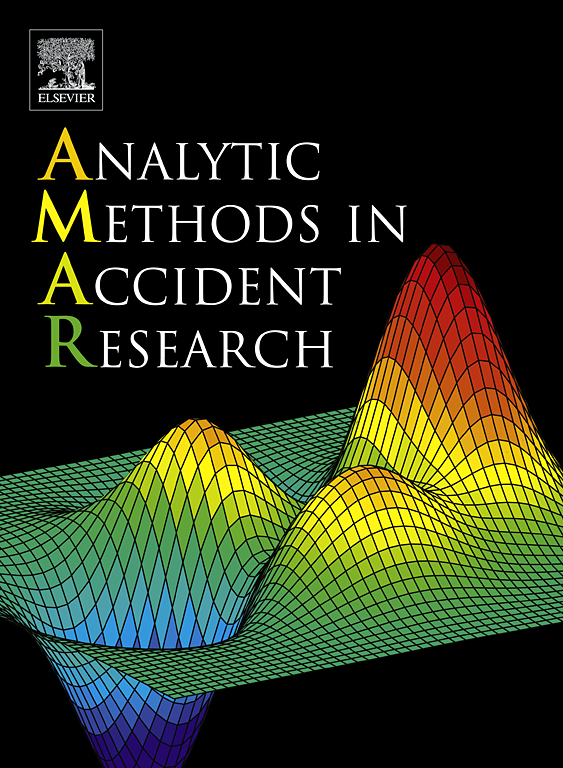A note on data segmentation, sample size, and model specification for crash injury severity modeling
IF 12.6
1区 工程技术
Q1 PUBLIC, ENVIRONMENTAL & OCCUPATIONAL HEALTH
引用次数: 0
Abstract
In recent years, the statistical assessment of crash injury severity data has increasingly begun to segment the available crash data into observational groups to explore the possibility that such groups may share the same estimated parameters. This method is commonly used to account for parameters that may shift over time, where the data is often segmented into groups based on observational year. Unfortunately, such data segmentation can lead to small samples within each group, which has caused some concern about decreasing sample size. However, concerns about diminishing sample size are often misplaced and not well understood. In this paper, the impact of data segmentation is assessed by estimating models that address the possibility of temporally shifting parameters. Starting with a large 80,000 observation sample, the process involves randomly segmenting the data into groups with sample sizes varying from 1000 to 40,000, and then assessing the difference between the estimated data-segmented models and the overall model (using all available data) using likelihood ratio tests. The results indicate that: 1) model specification is extremely important, regardless of sample size, 2) statistical tests should be used to determine the suitability of simple versus complex models, not sample size, and 3) the variance/covariance structure of the data being considered determines model specification and sample size effects, which means sample-size requirements are data-specific, and that general statements regarding minimum sample size requirements for specific model types cannot be made.
关于碰撞损伤严重程度建模的数据分割、样本量和模型规范的说明
近年来,碰撞损伤严重程度数据的统计评估越来越多地开始将可获得的碰撞数据划分为观察组,以探索这些组可能具有相同估计参数的可能性。这种方法通常用于解释可能随时间变化的参数,其中数据通常根据观测年份分成几组。不幸的是,这样的数据分割可能导致每个组内的小样本,这引起了一些关于减少样本量的担忧。然而,对样本量减少的担忧往往是错误的,也没有得到很好的理解。在本文中,通过估计模型来评估数据分割的影响,该模型解决了暂时转移参数的可能性。从80,000个大型观察样本开始,该过程涉及将数据随机分割为样本量从1000到40,000不等的组,然后使用似然比检验评估估计的数据分割模型与总体模型(使用所有可用数据)之间的差异。结果表明:1)模型规格极其重要,无论样本量如何;2)统计检验应用于确定简单模型与复杂模型的适宜性,而不是样本量;3)所考虑的数据的方差/协方差结构决定模型规格和样本量效应,这意味着样本量要求是针对具体数据的,不能就具体模型类型的最小样本量要求作出一般性说明。
本文章由计算机程序翻译,如有差异,请以英文原文为准。
求助全文
约1分钟内获得全文
求助全文
来源期刊

Analytic Methods in Accident Research
Multiple-
CiteScore
22.10
自引率
34.10%
发文量
35
审稿时长
24 days
期刊介绍:
Analytic Methods in Accident Research is a journal that publishes articles related to the development and application of advanced statistical and econometric methods in studying vehicle crashes and other accidents. The journal aims to demonstrate how these innovative approaches can provide new insights into the factors influencing the occurrence and severity of accidents, thereby offering guidance for implementing appropriate preventive measures. While the journal primarily focuses on the analytic approach, it also accepts articles covering various aspects of transportation safety (such as road, pedestrian, air, rail, and water safety), construction safety, and other areas where human behavior, machine failures, or system failures lead to property damage or bodily harm.
 求助内容:
求助内容: 应助结果提醒方式:
应助结果提醒方式:


